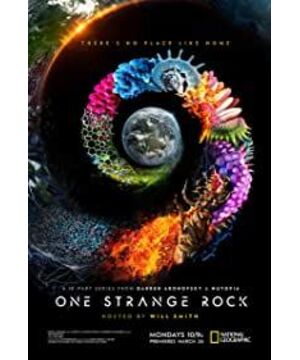Part 1: Gasp
Maybe we don't realize, where do our breaths and breaths come from and where do they go? Why is it that in the vast universe, the earth has the right amount of oxygen to allow life to survive?
Those conversions between water, oxygen, and carbon dioxide, from the depths of the earth to the sky above the Amazon rainforest, form a complete closed loop that never stops. The lungs of the earth also need the cooperation of various systems in order to become the root of life.
Part 2: Storm
The earth is the homeland of mankind, but calm and calm has never been synonymous with it. In fact, lightning strikes hundreds of times a day on this planet, and storms are brewing all the time. After each storm, however, comes a reshaping of the planet. In hundreds of millions of years, this planet is no longer pure jade. After being polished millions of times, it is so beautiful.
Part 3: Sheld
The universe is not a friendly environment. Ubiquitous radiation, ultraviolet rays from the sun, and enormous heat can easily change a planet's environment. However, our planet has three layers of barriers. While protecting the earth, they also created a cosmic spectacle.
Part 4: Genesis
From a simple inorganic small molecule, how to form an organic molecule for the origin of life? How did water become a hotbed for the origin of life? The birth of a new species is like cooking - it takes the right environment, enough temperature and the right seasoning to make it delicious.
Part 5: Survival
Where there is life, there is death, where there is a beginning, there is an end. How do all kinds of things on earth complete reincarnation again and again, allowing life to cycle back and forth in different forms on this planet? If life is the gift of this planet, then why don't we make it a gift of this magical land after life is gone?
Part 6: Escape
If one day, we are not satisfied with the earth, where can we escape? Humans have been able to build space shuttles to go to space, and can also use scientific methods to change the environment, but is human life really tenacious enough to escape this planet? The biggest difficulty in escaping is not technology, but the vulnerability of people.
Part 7: Terroform
The earth gave birth to life, so how does life change the earth? Humans are just passers-by of the earth, not the masters of the earth. The vicissitudes of life have changed, but this planet is eternal.
Part 8: Alien
The concept of aliens seems to have been misinterpreted. Earth people are actually a kind of alien, not to mention that there are tens of thousands of wonderful creatures on the earth. Therefore, if you want to know whether aliens can exist, it is better to start by exploring how people on earth exist.
Part 9:Awaenking
There are far more ignorant life than intelligent life, so what makes intelligent life so outstanding? is the brain. The brain gives us the ability to perceive, learn and communicate. It allows humans to emerge from chaos, evolve, collaborate with each other, and eventually go into space.
Part 10: Home
How to define "home"? Is it where we were born, where we grew up, or - where we are shaped? How did the eight astronauts' experiences in space affect their definition of "home"? From I am from Iowa to I am from the earth, what kind of transmutation?
Similar to the splendid spectacle of a BBC documentary - every frame of this National Geographic documentary is a work of art quality. From microscopic photography, to space scenes, from the Nordic snow to the equatorial ocean, it connects every wonderful holy place on the earth.
In addition, the eight astronauts told us about their space experience in black and white images. How out of reach is our daily breath in space? What does a lightning storm look like in space? From different perspectives, we can gain different insights.
What is even more commendable is that the narrative style of this documentary is quite cinematic. There are several episodes in the middle that use a circular narrative, which can drive the audience to think together while watching, and create a sense of turning point at the last moment.
While showing the natural scenery, he also traveled to cities and countries all over the world - the high-rise buildings in Hong Kong, the decadence of the abandoned island in Japan, the jubilant scene of Mexico's Day of the Dead, and the colorful Holi Festival in India. A little bit of humanistic atmosphere is brewing in each episode.
In the tenth episode, a more philosophical topic was thrown-how to define a home? Are we any different on Earth?
All in all, this documentary combines natural scenery, humanistic spirit and artistic quality, and it is worth watching.
View more about One Strange Rock reviews











